
Find Help
More Items From Ergsy search
-

What is minimally invasive hip replacement surgery?
Relevance: 100%
-

Hip replacement
Relevance: 59%
-

How long does a hip replacement surgery take?
Relevance: 58%
-

What are the risks associated with hip replacement surgery?
Relevance: 57%
-

Do I need a Hip Replacement?
Relevance: 56%
-

What is a hip replacement?
Relevance: 54%
-

How much does hip replacement surgery cost in the UK?
Relevance: 53%
-

A journey to hip surgery
Relevance: 52%
-

Total hip replacement
Relevance: 52%
-

How do I prepare for hip replacement surgery?
Relevance: 52%
-

Total hip replacement at Northumbria Healthcare
Relevance: 50%
-

Can both hips be replaced at the same time?
Relevance: 50%
-

Total Hip Replacement
Relevance: 50%
-

What type of anaesthesia is used during hip replacement surgery?
Relevance: 49%
-

Will I need physical therapy after a hip replacement?
Relevance: 46%
-

What is the recovery time for a hip replacement?
Relevance: 45%
-

Your anaesthetic choices for your planned hip or knee replacement surgery at the RUH.
Relevance: 43%
-
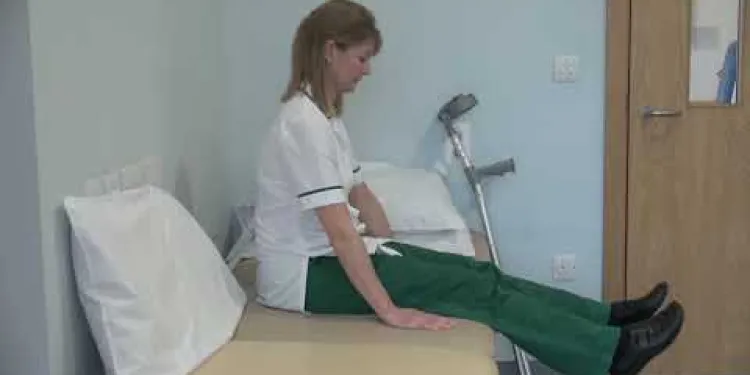
Hip replacement - getting into bed
Relevance: 43%
-

Having a hip replacement - Part Two: Recovery
Relevance: 37%
-

Enhanced Recovery - Hip
Relevance: 36%
-

Same day discharge for NHS Golden Jubilee’s hip replacement patients
Relevance: 35%
-

Osteoarthritis of the Hip
Relevance: 33%
-
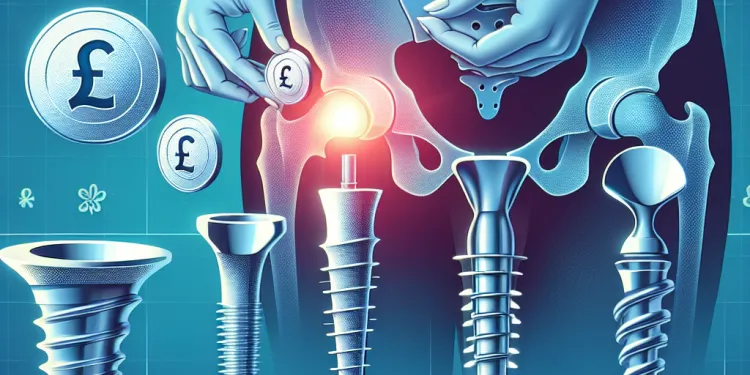
Are there different types of hip implants?
Relevance: 33%
-
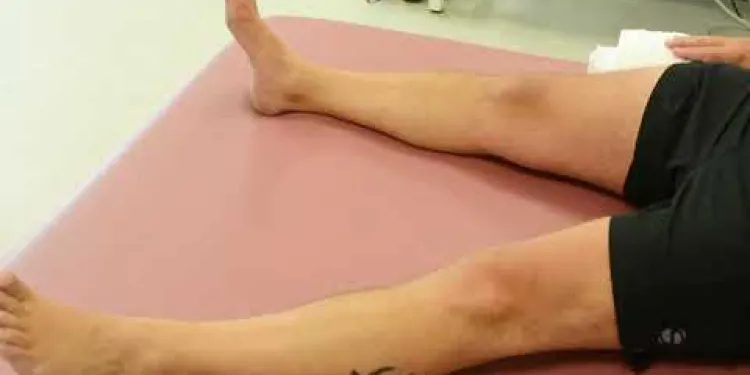
Joint School - Hip Exercises
Relevance: 32%
-

Total knee replacement
Relevance: 31%
-

Osteoarthritis of the Hip
Relevance: 31%
-

How long do hip replacement implants last?
Relevance: 31%
-

What can I expect during the first few weeks after hip replacement surgery?
Relevance: 30%
-

Will I be able to return to normal activities after hip replacement?
Relevance: 29%
-

Knee replacement
Relevance: 28%
-

What kind of footage is considered an invasion of privacy?
Relevance: 27%
-

Total Knee Replacement
Relevance: 25%
-

Evidence-Based Interventions: haemorrhoid surgery
Relevance: 24%
-
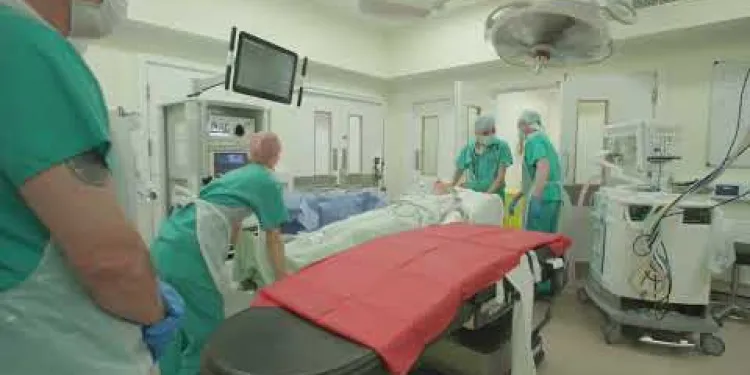
Prostate Surgery
Relevance: 22%
-

NHS Faces Backlash Over Record-Breaking Surgery Waiting Times
Relevance: 22%
-
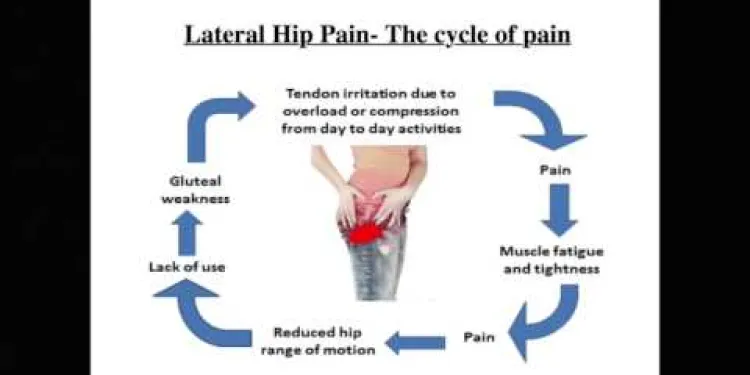
Advice - How to manage your lateral hip pain
Relevance: 22%
-
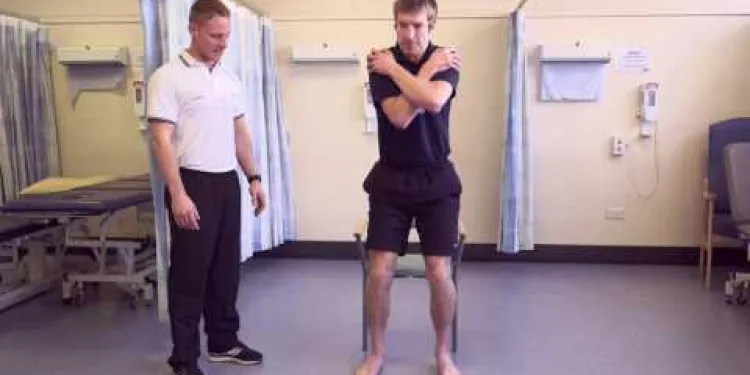
Exercises to help your lateral hip pain
Relevance: 22%
-
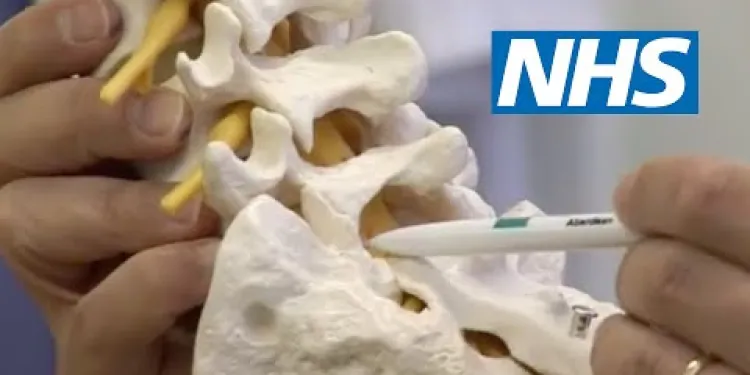
Lumbar surgery | NHS
Relevance: 21%
-

Who is a candidate for a hip replacement?
Relevance: 21%
-

FFR-CT beat invasive conventional coronary angiography says a Cardiologist
Relevance: 21%
Introduction to Minimally Invasive Hip Replacement Surgery
Minimally invasive hip replacement surgery is an advanced surgical technique used to replace a damaged or worn-out hip joint with prosthetic components through smaller incisions. This approach is becoming increasingly popular in the UK due to its potential benefits, such as faster recovery times and reduced post-operative pain, compared to traditional hip replacement surgery.
How is the Procedure Performed?
In minimally invasive hip replacement surgery, surgeons typically make one or two small incisions, usually between 3 to 6 inches long, as opposed to the larger 8-12 inch incision used in traditional surgery. These smaller incisions allow the surgeon to access the hip joint with less disruption to the surrounding muscles and tissues. The surgeon uses specialized instruments to remove the damaged bone and cartilage and then positions the new artificial joint components precisely. This technique may utilize computer-assisted technology to enhance accuracy.
Benefits of Minimally Invasive Surgery
One of the primary advantages of minimally invasive hip replacement is the potential for a quicker recovery. Smaller incisions generally lead to less pain after surgery, reduced scarring, and lower risk of infection and bleeding. Patients are often able to return to normal activities, including walking, within weeks rather than months. Additionally, the smaller incisions can preserve the muscles, which may enhance hip joint stability post-surgery.
Suitability and Considerations
Not every patient is a candidate for minimally invasive hip replacement surgery. Ideal candidates typically include younger patients, those with a lower body mass index, and individuals without complex hip joint conditions. Surgeons will assess factors such as the patient's overall health, anatomy, and specific hip issues. It's important for patients to discuss all surgical options with their healthcare provider to determine the most appropriate approach.
Potential Risks and Complications
As with any surgical procedure, minimally invasive hip replacement carries some risks, including infection, blood clots, and potential damage to surrounding nerves and vessels. There is also the possibility of prosthetic joint issues, such as dislocation or wear over time. However, the reduced invasiveness of this surgical technique can mitigate some of these risks compared to more traditional methods. Post-surgery, following rehabilitation instructions carefully is crucial for optimal recovery and function of the hip joint.
Conclusion
Minimally invasive hip replacement surgery represents a significant advancement in orthopaedic surgical techniques. For eligible patients, it offers a promising alternative to traditional surgery with potential benefits including quicker recovery, less pain, and improved cosmetic results. If considering hip replacement surgery, consulting with an experienced orthopaedic surgeon is essential to understand the potential risks and benefits in your specific case.
Introduction to Small Cut Hip Surgery
Small cut hip surgery is a special way to change a bad hip. Doctors use small cuts to put in new hip parts. Many people in the UK like this way because you can get better faster. It also hurts less after the surgery compared to the old way.
How is the Surgery Done?
For small cut hip surgery, doctors make one or two small cuts. The cuts are about 3 to 6 inches long. In the old way, the cut is bigger, around 8-12 inches. With smaller cuts, doctors can work on the hip without hurting the muscles around it much. They use special tools to take out the bad parts of the bone and put in new ones. Sometimes, they use computers to help make sure everything is in the right place.
Benefits of Small Cut Surgery
One big good thing about small cut hip surgery is that you get better faster. Smaller cuts mean there is less pain, less scarring, and a lower chance of getting an infection. People can start doing things like walking sooner, usually in weeks not months. Also, because the cuts are small, the muscles stay stronger which helps the hip stay steady.
Who Can Have Small Cut Surgery?
Not everyone can have small cut hip surgery. It’s best for younger people, people who aren’t overweight, and those who don’t have complicated hip problems. Doctors will check your health, body, and hip to see if it’s the right choice for you. It’s important to talk to your doctor about all your surgery options.
Risks of Small Cut Surgery
Every surgery has risks. With small cut hip surgery, there can be infections, blood clots, and possible damage to nerves and blood vessels. The new hip joint could have issues, like moving out of place or wearing out. But because this surgery is less invasive, some risks are smaller. Listening to your doctor and following instructions after surgery is very important for the best recovery.
Conclusion
Small cut hip surgery is a big step forward in bone surgeries. For some people, it is a good choice instead of the old way. It can mean getting better faster, having less pain, and looking nicer. If you think you need hip surgery, talk to a doctor who knows about these surgeries. They can help you understand what is best for you.
Frequently Asked Questions
What is minimally invasive hip replacement surgery?
Minimally invasive hip replacement surgery is a procedure that allows surgeons to replace a damaged hip joint with an artificial implant using smaller incisions and causing less damage to the surrounding muscles and tissues compared to traditional surgery.
How does minimally invasive hip replacement differ from traditional hip replacement surgery?
Minimally invasive hip replacement involves smaller incisions and aims to minimize the disruption to muscles and tissues, potentially resulting in reduced pain, quicker recovery, and less scarring compared to traditional hip replacement surgery.
Who is a candidate for minimally invasive hip replacement surgery?
Candidates for minimally invasive hip replacement surgery are typically those with severe hip pain due to arthritis or injury, good overall health, and a reasonable body weight. However, eligibility is determined on a case-by-case basis by the surgeon.
What are the benefits of minimally invasive hip replacement surgery?
The benefits include reduced postoperative pain, shorter hospital stay, faster recovery, less scarring, and a quicker return to normal activities.
Are there any risks associated with minimally invasive hip replacement surgery?
As with any surgery, there are risks such as infection, blood clots, nerve damage, or implant issues. However, the risks are generally similar to those associated with traditional hip replacement surgery.
How long does recovery take after minimally invasive hip replacement surgery?
Recovery time can vary but often patients can expect to resume normal activities within 4 to 8 weeks, which may be faster than traditional methods.
Will I need physical therapy after minimally invasive hip replacement surgery?
Yes, physical therapy is usually recommended to help restore movement, strengthen the joint, and improve flexibility after surgery.
How long will I need to stay in the hospital after minimally invasive hip replacement surgery?
Many patients can leave the hospital within 1 to 3 days following minimally invasive hip replacement surgery, depending on their recovery progress.
Can both hips be replaced at the same time using minimally invasive techniques?
In some cases, bilateral hip replacement can be performed, but this depends on the patient's health, condition, and the surgeon's recommendation.
Is minimally invasive hip replacement surgery more expensive than traditional surgery?
The cost can vary depending on various factors including the facility, region, and insurance. It's important to check with your healthcare provider and insurance company for specific costs.
What type of anesthesia is used for minimally invasive hip replacement surgery?
The surgery can be performed under general anesthesia or regional anesthesia, such as a spinal block, depending on the patient's and surgeon's preference.
How should I prepare for minimally invasive hip replacement surgery?
Preparation may include preoperative assessments, medication adjustments, arranging for transportation and home assistance, and completing any required physical therapy or exercises.
What types of implants are used in minimally invasive hip replacement surgery?
The implants are similar to those used in traditional surgery and can be made of materials like metal, ceramic, or plastic. The choice of implant depends on the individual case.
How can I manage pain after minimally invasive hip replacement surgery?
Pain management may include prescribed pain medications, physical therapy, and following recommended home care instructions to ease discomfort.
Will I have restrictions on activities after minimally invasive hip replacement?
Initially, there may be restrictions to prevent injury while the hip heals. Over time, many patients can resume most normal activities, sometimes with certain modifications.
Can I expect scars after minimally invasive hip replacement surgery?
Since smaller incisions are used, scarring is typically minimal compared to traditional surgery, but some scarring is unavoidable.
What are the chances of needing revision surgery after minimally invasive hip replacement?
While most hip replacements are successful long-term, there is a small chance of needing revision surgery due to implant wear or complications.
Are there any specific age limits for minimally invasive hip replacement surgery?
While there's no strict age limit, the patient's overall health and mobility affect candidacy more than age alone. Many older adults can benefit from the surgery.
How common is minimally invasive hip replacement surgery?
Minimally invasive techniques are becoming increasingly common as they can offer benefits like faster recovery, although not all surgeons may offer them.
What should I do if I experience problems after minimally invasive hip replacement surgery?
If you experience unusual pain, swelling, fever, or other symptoms, contact your surgeon or healthcare provider immediately for evaluation and treatment.
What is minimally invasive hip replacement surgery?
Minimally invasive hip replacement surgery is a type of surgery for your hip. During this surgery, doctors fix your damaged hip with a small cut. This makes you heal faster and have less pain.
Here are some things that can help you understand and remember:
- Look at pictures or videos of the surgery to see how it works.
- Ask someone to explain it to you using simple words or drawings.
- Use a voice recorder to listen to the information again.
Minimally invasive hip replacement surgery is a way to fix a bad hip. Doctors replace the hurt hip joint with a new, fake one. They do this with smaller cuts and cause less harm to muscles and skin than regular surgery.
What is the difference between a small cut hip surgery and normal hip surgery?
A minimally invasive hip replacement is a type of surgery. It uses smaller cuts to help heal your hip joint. This means the doctors try not to move your muscles and tissues too much. Because of this, you might feel less pain and get better faster. You might also have smaller scars than with regular hip surgery.
Who can have a simple hip surgery?
People who might need a smaller surgery for a new hip have really bad hip pain. This pain can be from wear and tear or getting hurt. These people are usually in good health and not too heavy. But in the end, the doctor will look at each person to see if this kind of surgery is right for them.
What are the good things about having a small hip operation?
A small hip operation helps fix your hip with less cutting. This means:
- Less pain after the operation.
- Less time in the hospital.
- You can heal quicker.
- There are fewer scars.
It is good to talk to your doctor about this if you need hip surgery.
Using picture cards or easy-read leaflets can help you understand more.
The good things about it are:
- Less pain after surgery
- Shorter time in the hospital
- Faster healing
- Smaller scars
- Getting back to normal things quicker
Using tools like pictures or videos can help understand this better.
Is there anything dangerous about simple hip surgery?
Sometimes, doctors fix hips with a small surgery. But there can be some problems. It is important to talk to your doctor about this.
Here are some things that might help:
- Ask questions if you don’t understand.
- Bring a friend or family member to the doctor with you.
- Use pictures or drawings to explain things better.
All surgery can have risks. These include infections, blood clots, nerve damage, or problems with the implant. But these risks are usually the same as regular hip replacement surgery.
How long does it take to feel better after a small cut hip surgery?
Here is some simple information:
- This surgery is a way to fix your hip.
- The doctor makes a small cut, so it is less painful.
- You might feel better in about 6 weeks.
- Some people need longer, maybe 3 months.
- Doing exercises and having help can make healing faster.
Ask your doctor for advice and support.
Getting better can take different lengths of time. Most people can go back to their usual activities in 4 to 8 weeks. This might be quicker than doing it the old way.
If reading is hard, try using a finger to follow the words, or read with a friend or family member. You can also use an app that reads text out loud.
Will I need help to move after a small hip surgery?
Yes, physical therapy can help you move better after surgery. It makes your joints strong and flexibles.
How long will I stay in the hospital after hip surgery?
After a small cut hip surgery, you may stay in the hospital for a few days. Most people stay 2 or 3 days. You will have doctors and nurses to help you. They will check you to make sure you are okay. If you need help reading this, ask someone you trust to read it with you. You can also use special tools on a computer that read the text out loud.After a small hip surgery, most people can go home in 1 to 3 days. It depends on how well they are getting better.
Can you have both hips fixed at once with a gentle surgery?
Sometimes, doctors can fix both hips at the same time using a gentle way. This is called "minimally invasive." It means they make tiny cuts and use special tools, so it's easier for your body.
If you're wondering about this, you can:
- Talk to your doctor about what is best for you.
- Use pictures or videos to understand better.
- Ask someone you trust to help you read the information.
Sometimes, a doctor can replace both hip joints in one surgery. This is called bilateral hip replacement. But it depends on how healthy the person is, what their problems are, and what the doctor thinks is best.
Is a smaller cut hip surgery more expensive than the regular one?
The cost can change based on different things like where you go, where you live, and if you have insurance. It's a good idea to ask your doctor and your insurance company how much it will cost.
What type of medicine is used to help patients not feel pain during small hip surgery?
The operation can be done while you are asleep, or awake but without feeling in the lower part of your body. The doctor will decide with you which is best.
How can I get ready for a simple hip surgery?
Here are some steps to help you prepare:
- Talk to your doctor: Ask your doctor questions about what will happen during the surgery.
- Plan for help: Arrange for someone to help you at home after the surgery.
- Stay healthy: Eat good food and rest well before the surgery.
- Understand medicine: Know what medicine you will need to take before and after the surgery.
- Practice walking: Use crutches or a walker to get used to them if you will need them later.
Use a calendar to keep track of your appointments. Ask someone to write down any questions you have for the doctor. You can also use pictures to understand what will happen.
Getting ready for surgery means doing a few things. You might need to see the doctor before surgery. You may have to change some of your medicine. Make sure someone can drive you to and from the hospital. You might also need help at home after the surgery. Doing some exercises might also be important.
What kind of implants are used in easy hip surgery?
In simple hip surgery, doctors use special parts called implants. These implants help fix the hip.
Types of Implants:
- Metal Ball: A strong metal ball replaces the top of the hip bone.
- Plastic Cup: A smooth cup fits in the hip socket. The metal ball moves inside this cup.
- Ceramic Parts: Sometimes, doctors use ceramic instead of metal or plastic.
These implants help the hip move smoothly. Talk with your doctor if you have questions.
Tools to Help:
- Watch videos to see how the implants look.
- Ask someone to read the information with you.
- Use pictures to understand better.
The implants are like the ones used in regular surgery. They can be made from metal, ceramic, or plastic. The doctor chooses which one to use based on what the patient needs.
If you need help to understand, you can:
- Use pictures or videos to see what implants look like.
- Ask a doctor or nurse to explain it with simple words.
How can I feel better after a small hip surgery?
To help with pain, you might take medicine from the doctor. You can also do special exercises with a therapist. Follow advice for taking care of yourself at home to feel better.
What can I do after a simple hip surgery?
At first, you need to be careful so you don't get hurt as your hip gets better. As time goes on, most people can start doing their usual activities again. You may need to make some changes to how you do them.
Will I have scars after a small cut hip surgery?
When doctors make tiny cuts, there are usually only small scars. This is better than big cuts from normal surgery, but you might still see some small scars.
Will I need another surgery after a small hip operation?
Most hip replacements work well for a long time. But sometimes, the hip might need another surgery if there are problems or if it wears out.
If you need help understanding this, you can:
- Ask someone to read it with you.
- Use tools that read text out loud.
Is there an age limit for keyhole hip surgery?
Doctors can perform keyhole hip surgery on different age groups.
This type of surgery helps people with hip pain.
It is important to talk to a doctor.
They can explain if the surgery is a good idea for someone’s age and health.
Using pictures and simple explanations can help people understand.
It might also help to have a family member or friend to talk with about the doctor's advice.
There is no set age limit for the surgery. What matters more is how healthy and active the person is. Many older people can still have the surgery and it can help them.
How often do doctors use simple hip surgery?
Doctors are using new ways to do surgery that are gentle on the body. These ways can help people get better faster. But, not all doctors use these new ways yet.
What to do if you have problems after a small cut hip surgery?
If you feel bad with pain, swelling, have a fever, or notice anything strange, tell your doctor or surgeon right away. They can check you and help you get better.
Useful Links
- Ergsy carfully checks the information in the videos we provide here.
- Videos shown by Youtube after a video has completed, have NOT been reviewed by ERGSY.
- To view, click the arrow in centre of video.
- Most of the videos you find here will have subtitles and/or closed captions available.
- You may need to turn these on, and choose your preferred language.
- Go to the video you'd like to watch.
- If closed captions (CC) are available, settings will be visible on the bottom right of the video player.
- To turn on Captions, click settings .
- To turn off Captions, click settings again.
More Items From Ergsy search
-

What is minimally invasive hip replacement surgery?
Relevance: 100%
-

Hip replacement
Relevance: 59%
-

How long does a hip replacement surgery take?
Relevance: 58%
-

What are the risks associated with hip replacement surgery?
Relevance: 57%
-

Do I need a Hip Replacement?
Relevance: 56%
-

What is a hip replacement?
Relevance: 54%
-

How much does hip replacement surgery cost in the UK?
Relevance: 53%
-

A journey to hip surgery
Relevance: 52%
-

Total hip replacement
Relevance: 52%
-

How do I prepare for hip replacement surgery?
Relevance: 52%
-

Total hip replacement at Northumbria Healthcare
Relevance: 50%
-

Can both hips be replaced at the same time?
Relevance: 50%
-

Total Hip Replacement
Relevance: 50%
-

What type of anaesthesia is used during hip replacement surgery?
Relevance: 49%
-

Will I need physical therapy after a hip replacement?
Relevance: 46%
-

What is the recovery time for a hip replacement?
Relevance: 45%
-

Your anaesthetic choices for your planned hip or knee replacement surgery at the RUH.
Relevance: 43%
-

Hip replacement - getting into bed
Relevance: 43%
-

Having a hip replacement - Part Two: Recovery
Relevance: 37%
-

Enhanced Recovery - Hip
Relevance: 36%
-

Same day discharge for NHS Golden Jubilee’s hip replacement patients
Relevance: 35%
-

Osteoarthritis of the Hip
Relevance: 33%
-

Are there different types of hip implants?
Relevance: 33%
-

Joint School - Hip Exercises
Relevance: 32%
-

Total knee replacement
Relevance: 31%
-

Osteoarthritis of the Hip
Relevance: 31%
-

How long do hip replacement implants last?
Relevance: 31%
-

What can I expect during the first few weeks after hip replacement surgery?
Relevance: 30%
-

Will I be able to return to normal activities after hip replacement?
Relevance: 29%
-

Knee replacement
Relevance: 28%
-

What kind of footage is considered an invasion of privacy?
Relevance: 27%
-

Total Knee Replacement
Relevance: 25%
-

Evidence-Based Interventions: haemorrhoid surgery
Relevance: 24%
-

Prostate Surgery
Relevance: 22%
-

NHS Faces Backlash Over Record-Breaking Surgery Waiting Times
Relevance: 22%
-

Advice - How to manage your lateral hip pain
Relevance: 22%
-

Exercises to help your lateral hip pain
Relevance: 22%
-

Lumbar surgery | NHS
Relevance: 21%
-

Who is a candidate for a hip replacement?
Relevance: 21%
-

FFR-CT beat invasive conventional coronary angiography says a Cardiologist
Relevance: 21%


